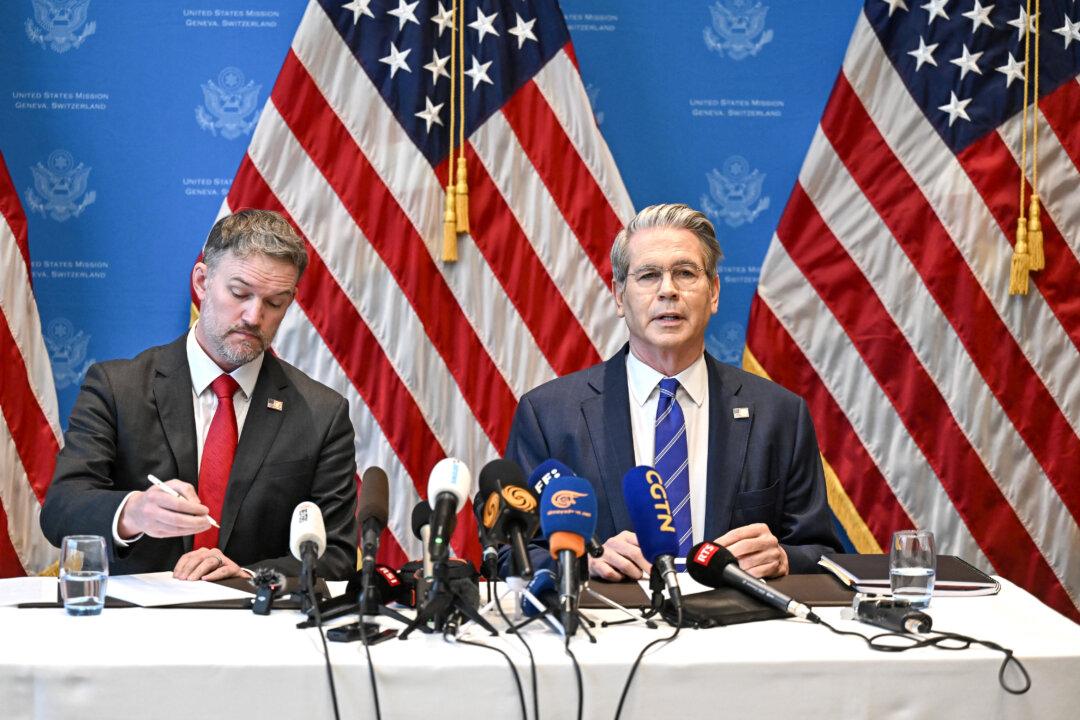The United States and China said on May 12 that they have agreed to a deal to slash reciprocal tariffs for 90 days.
Speaking after talks with officials from the Chinese communist regime in Geneva, U.S. Treasury Secretary Scott Bessent told reporters that the two sides had agreed on a 90-day pause on measures and that they will lower their tariffs during that period.





